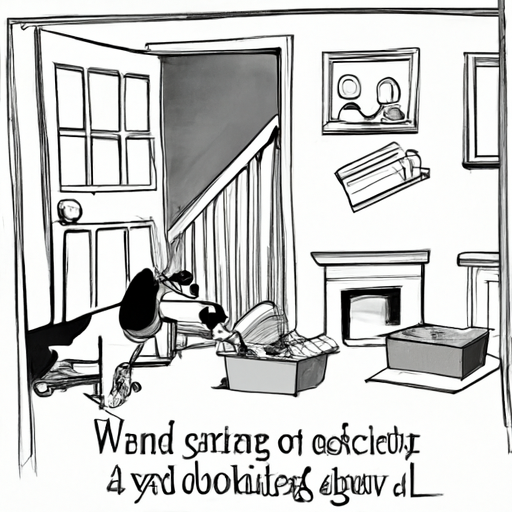As a caregiver, you undoubtedly want to ensure the well-being of your pets. One common issue that many dog owners face is the incessant barking of their pet when left alone in a crate. This article will help you understand the reasons behind this behavior and provide effective solutions to help manage it.
Understanding the Causes
Firstly, understanding the reasons behind your dog’s barking will aid in addressing the issue effectively.
- Separation Anxiety: Dogs are pack animals, and they may experience anxiety when left alone.
- Boredom: Dogs require mental and physical stimulation, and when deprived of these, they may resort to barking.
- Lack of Training: If your dog is not accustomed to staying in a crate, it may react negatively.
Choosing the Right Crate
The size and comfort of the crate can significantly influence your pet’s behavior.
- Size: The crate should be spacious enough for your dog to stand, turn around, and lie down comfortably. However, if it’s too large, your dog may use a corner as a bathroom.
- Comfort: Add soft bedding and favorite toys to make the crate feel like a safe and cozy place.
| Crate Size | Dog Size |
|---|---|
| Small | 1-10 lbs |
| Medium | 11-25 lbs |
| Large | 26-40 lbs |
| X-Large | 41-70 lbs |
| XX-Large | 71+ lbs |
Gradual Crate Training
Training your dog to comfortably stay in its crate can significantly reduce barking.
- Introduction: Start by leaving the crate door open and encouraging your dog to explore it.
- Short Stays: Once comfortable, close the door and leave your dog inside for short periods while you’re home.
- Increasing Duration: Gradually increase the crate time, eventually leaving the house for short periods.
Regular Exercise and Mental Stimulation
Regular exercise and mental stimulation can help reduce both boredom and anxiety.
- Physical Exercise: Daily walks, playtime in the yard, or a game of fetch can expend your dog’s energy.
- Mental Stimulation: Puzzle toys, obedience training, or hide-and-seek games can keep your dog mentally stimulated.
Positive Reinforcement
Reward your dog for quiet behavior to encourage more of it.
- Treats: Give your dog a treat whenever it stops barking in the crate.
- Praise: Verbal praise and petting can also serve as positive reinforcement.
Using Calming Aids
Calming aids can help alleviate stress and anxiety in dogs.
- Pheromone Diffusers: These devices release a synthetic version of the dog-appeasing pheromone that mother dogs produce to calm their puppies.
- Calming Music or Sounds: Soft music or white noise can have a soothing effect on dogs.
Consulting a Professional
If your dog’s barking persists, it’s advisable to consult a professional dog trainer or a veterinary behaviorist. They can provide personalized advice and strategies based on your dog’s specific needs.
FAQs
Q: How long should I leave my dog in the crate?
A: For an adult dog, four to five hours is usually the maximum. Puppies should only be left for two hours at most.
Q: Should I ignore my dog if he barks in the crate?
A: If you’re sure that your dog’s needs are met and it’s not in distress, ignoring the barking can be an effective method. However, it’s essential to reward quiet behavior.
Q: Can I use a bark collar to stop my dog’s barking in the crate?
A: Bark collars should be a last resort and used under professional guidance. They address the symptom (barking) but not the underlying problem (anxiety, boredom, lack of training).
In conclusion, stopping your dog from barking in the crate when you leave requires understanding, patience, and consistency. By following these strategies, you can help your furry friend feel more comfortable, reducing the need for barking and creating a peaceful environment for you both.



